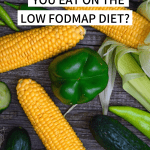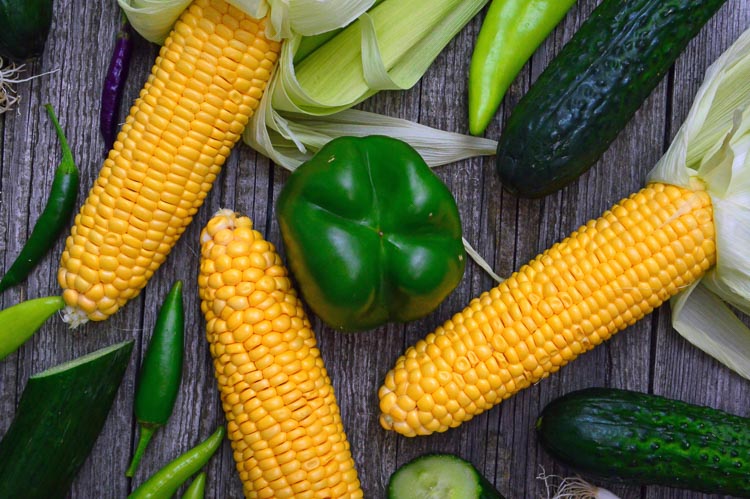
What can and can’t you eat on a low FODMAP diet?
When you are going to start with the low FODMAP diet the first question you ask yourself is “What can and can’t I eat in the low FODMAP diet?”.
In this blog, I am going to give you an overview of which foods you can eat on the diet and which foods you have to avoid.
Get your information from the right source
This blog is meant to give you an idea of the foods that you can eat and that you have to avoid on the low FODMAP diet.
For exact amounts and a complete overview of foods, I would highly recommend you to get the Monash low FODMAP app.
You can read more about the app in this blog. This is the app from the creators of the FODMAP diet.
It is always updated with the latest research and is the only source that you can be certain of that it contains the correct information about which foods are and aren’t low FODMAP and in which amounts you can eat them.
There are a lot of FODMAP lists to be found on the internet and other apps that you can get for free that give you information about which foods are low FODMAP and which aren’t.
But often the information in these sources is outdated or incorrect, which makes it harder for you to follow the diet in the right way.
New foods are constantly being tested and sometimes foods a retested, which leads to a change in the amount that you can eat, and therefore a paper resource, like a list or booklet gets outdated very quickly. Therefore, I always recommend using the Monash app.
The low FODMAP diet, not the no FODMAP diet
This diet is called the low FODMAP diet. This means that you have to lower the amount of FODMAPs that you eat significantly during the first phase of the diet.
Check out this blog about the elimination phase to learn more about the first phase of the diet. It doesn’t mean that you have to cut FODMAPs out of your diet completely and that is what confuses people sometimes.
For example: in the list below, you will see that most foods that contain a lot of wheat are generally off limits. However, you don’t have to avoid wheat completely.
Products that contain a little bit of wheat, such as soy sauce or soba noodles that are made of buckwheat and wheat are low FODMAP in certain quantities. You can learn more about gluten and the FODMAP diet here.
The same goes for lactose: high amounts of lactose are high FODMAP, but foods that contain a little bit of lactose are allowed on the low FODMAP diet. You can read more about lactose and the FODMAP diet here.
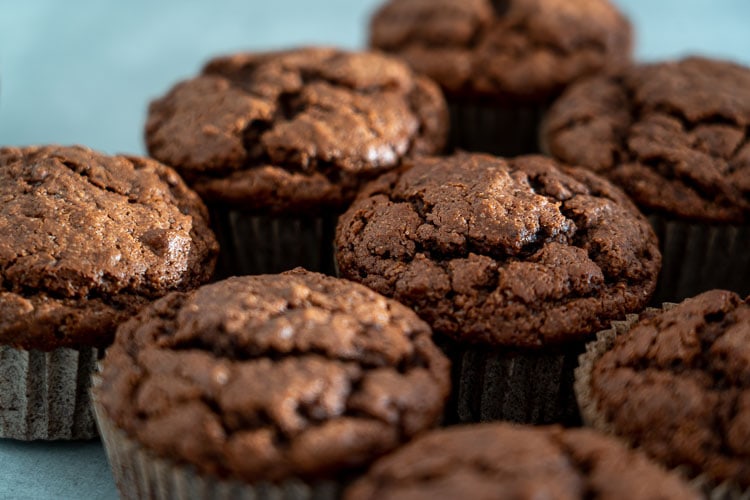
Foods you can eat and foods to avoid
Now that we have cleared that up, let’s move on to what you came to find out. What kind of foods can you eat on the low FODMAP diet and which foods do you have to avoid?
Grains and cereals
Foods that you have to avoid in large quantities are for example:
- Wheat bread
- Wheat pasta
- Wheat-based cereals
- Cookies, muffins, biscuits
- Couscous
Foods that you can use instead are:
- Gluten-free bread, cereals, and baked goods (make sure they don’t contain any high FODMAP ingredients)
- Sourdough spelt bread
- Gluten-free pasta
- Oats
- Rice
- Quinoa
- Gluten-free couscous
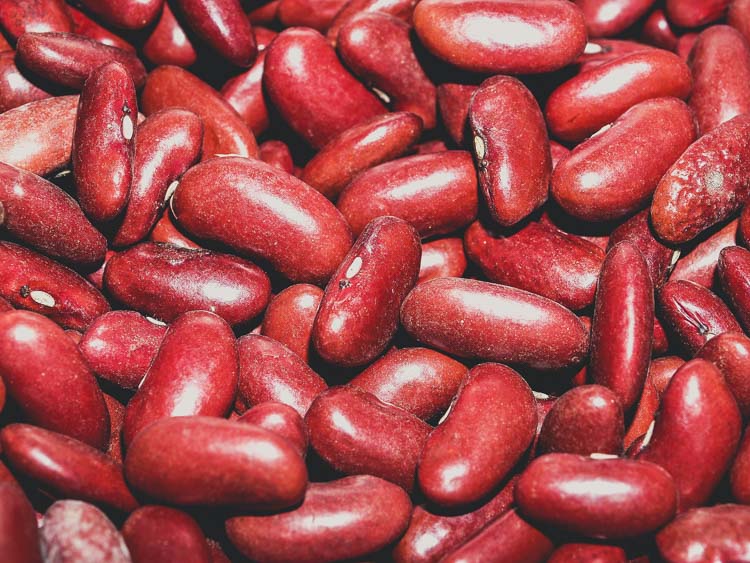
Beans, pulses and nuts
Foods that you have to avoid are, for example:
- Baked beans
- Borlotti beans
- Split peas
- Pistachios
- Cashew nuts
Foods that you can use instead are:
- A small amount of canned chickpeas (42 g)
- A small amount of canned lentils (46 g)
- Some kinds of canned beans, such as black beans are low FODMAP in a small amount (40 g per serving). Or kidney beans (up to 86 g per serving)
- Edamame beans (up to 90 g per serving)
- Peanuts
- Brazil nuts
- Pecan nuts
- Macadamia nuts
- Walnuts
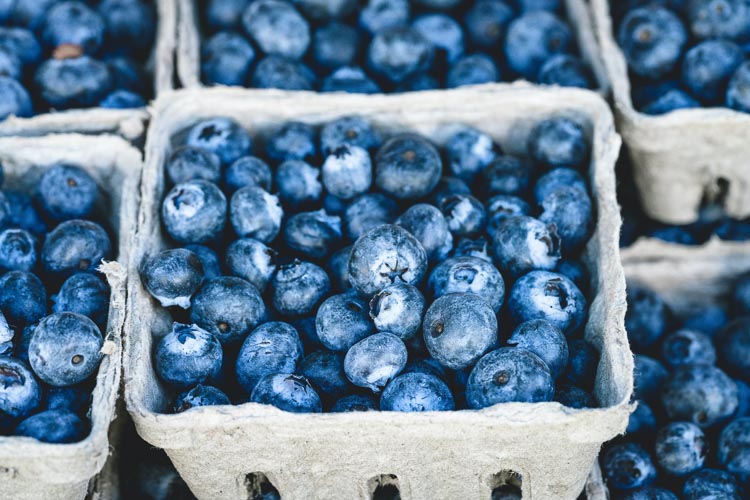
Fruits
Fruits that you have to avoid (or can only have in really small amounts) are, for example:
- Apricots
- Blackberries
- Ripe bananas
- Cherries
- Pears
- Peaches
- Plums
- Watermelon
- Mango
- Most dried fruits
Fruits that you can use instead:
- Unripe banana (up to 100 g per serving)
- Blueberries (max. 40 g)
- Raspberries (max. 60 g)
- Strawberries (max. 65 g)
- Grapes (max. 28 g)
- Apples (max. 20 g)
- Avocado (max. 30 g)
- Kiwi fruit
- Mandarines
- Oranges
- Pineapple (max. 140 g)
- Lemon
- Lime
Vegetables
Foods that you have to avoid:
- Artichokes
- Mushrooms (except for the ones mentioned below)
- Cauliflower
- Sweet corn
- Brussels sprouts
- Asparagus
- Peas
- Garlic
- Onion
Foods that you can use instead:
- Tomatoes (max. 65 g)
- Cucumber
- Bell pepper green (max. 75 g)
- Bell pepper red (max. 43 g)
- Lettuce
- Carrots
- Kale
- Japanese pumpkin
- Canned mushrooms and oyster mushrooms
- Eggplant (max. 150 g)
- Bean sprouts
- Spinach
- The green parts of spring onion and leek

Dairy products
Foods you have to avoid:
- Milk
- Yogurt
- Soy milk made of soybeans
- Goat’s milk
- Goat’s yogurt
- Greek yogurt
- Cream cheese
- Ice cream
Foods you can eat:
- Lactose-free milk
- Soy milk made of soy protein
- Almond milk
- Rice milk
- Lactose-free yogurt
- Lactose-free cream cheese
- Lactose-free ice cream or sorbet ice cream of safe fruits (make sure no high FODMAP ingredients have been added)
- Most cheeses, in limited amounts
- Butter
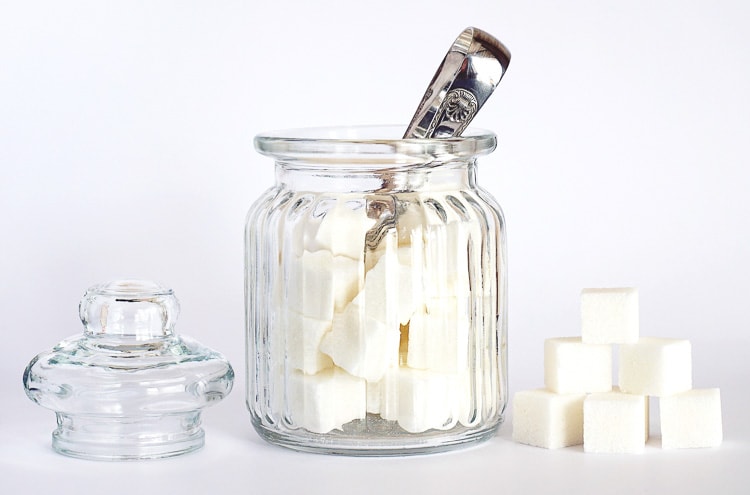
Sweeteners and sugars
Foods you have to avoid:
- Honey
- Golden syrup
- Agave syrup
- Fructose and high-fructose corn syrup (as ingredients)
- Sorbitol
- Mannitol
What you can use instead:
- Maple syrup
- Rice syrup
- Stevia
- Sugar
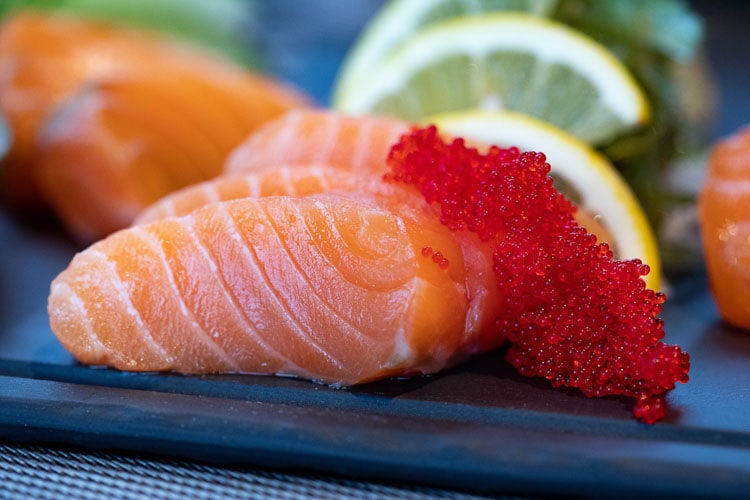
Meat, fish, eggs and vegetarian alternatives
What to avoid:
- Breaded meat or meat that has been marinated with high FODMAP spices, such as garlic or onion
- Breaded fish or fish that has been marinated with high FODMAP spices, such as garlic or onion
- Silken tofu
What you can eat:
In general, all meat, fish, and eggs are low FODMAP because they don’t contain carbohydrates and FODMAPs are carbohydrates. So you can eat all plain fish and meat.
Just make sure to check that no high FODMAP ingredients have been added in marinades or crusts. Tempeh and tofu (when not containing high FODMAP ingredients) are also low FODMAP.
Important to remember
It is important to remember that some foods that are high in FODMAPs sometimes have a small low FODMAP serving size. See the example that I gave at the beginning of this blog about wheat in soy sauce.
Apple also is high FODMAP in most normal serving sizes: half an apple or an entire apple is high in fructose and sorbitol and therefore not low FODMAP.
But a very small amount of apple is low FODMAP: 20 gram per serving. That is not a lot, but it is enough to make something that contains a little bit of apple, such as these apple crumble bars.
Vice versa, you also have to keep in mind that some products that have a larger low FODMAP serving can become high in FODMAPs at a high serving.
Specific information like this about serving sizes can be found in the Monash app. I highly recommend buying the app. I have been following an (adapted) low FODMAP diet for over five years and still use the app weekly.
More information about specific foods
Do you want to get more information about the FODMAPs in specific foods and in what quantities you can eat them?
Then you can check out the blogs below:
Fruits and vegetables
- Are tomatoes low FODMAP?
- Is bell pepper low FODMAP?
- Is coconut low FODMAP?
- Are bananas low FODMAP?
- Are mushrooms low FODMAP?
- Is broccoli low FODMAP?
- Is kale low FODMAP?
- Is spinach low FODMAP?
- Is corn low FODMAP?
- Is avocado low FODMAP?
- Is sweet potato low FODMAP?
Dairy and grains
- Is rice low FODMAP?
- Is quinoa low FODMAP?
- Are oats low FODMAP?
- Which milk is low FODMAP?
- What cheeses are low FODMAP?
- Is butter low FODMAP?
Other foods and drinks
- What nuts are low FODMAP?
- What beans are low FODMAP?
- Is peanut butter low FODMAP?
- Is popcorn low FODMAP?
- Is soy low FODMAP?
- What alcoholic drinks are low FODMAP?
- Is coffee low FODMAP?
Download the FODMAP ingredients checklist
You subscribe to the Karlijn's Kitchen newsletters and will receive tips, the latest recipes and more handy info regularly.

